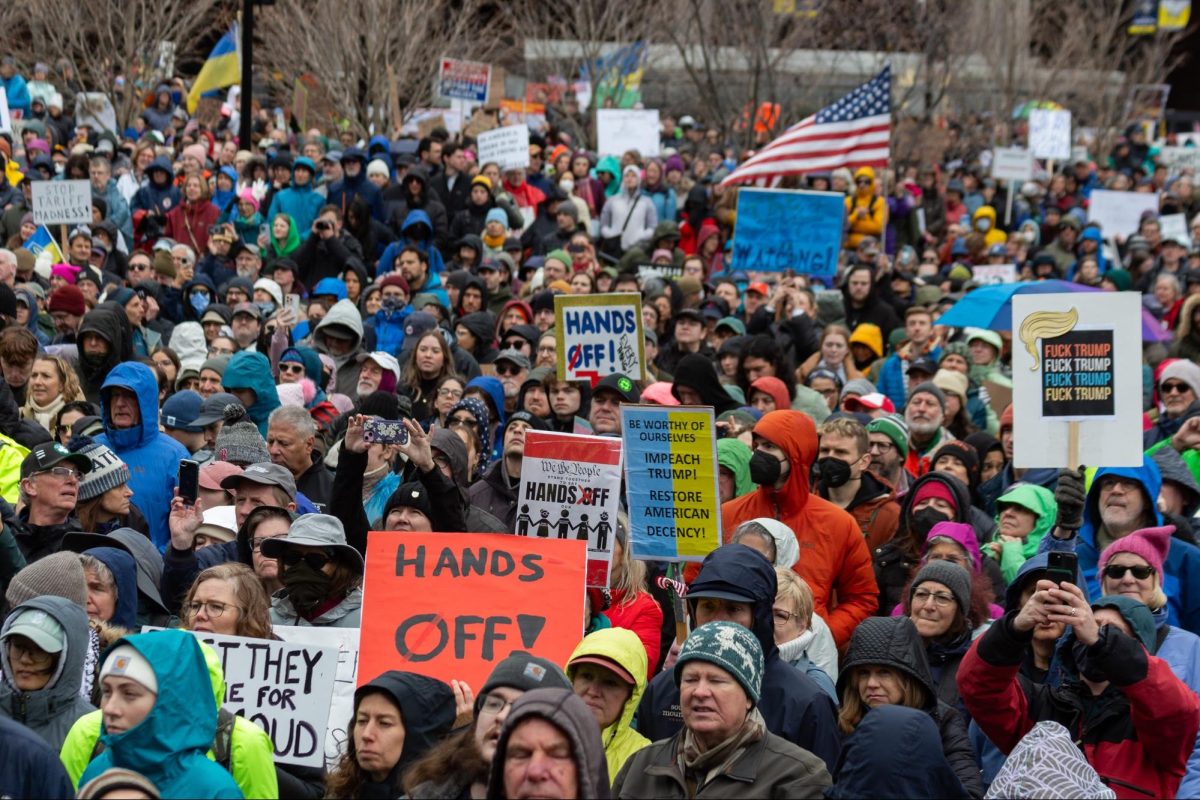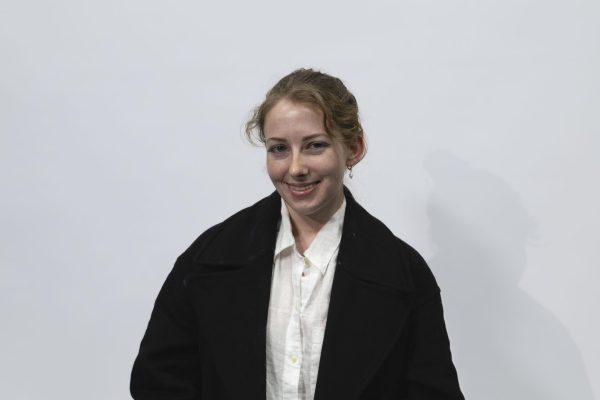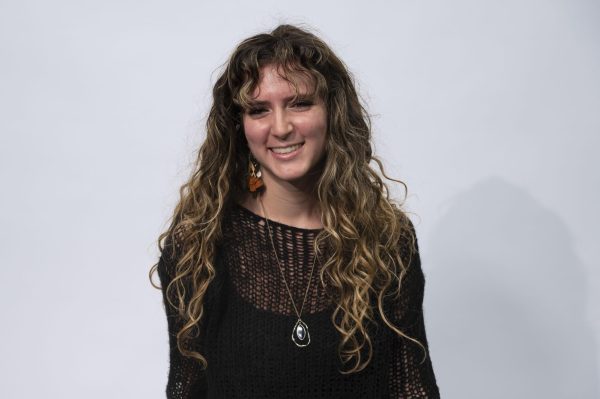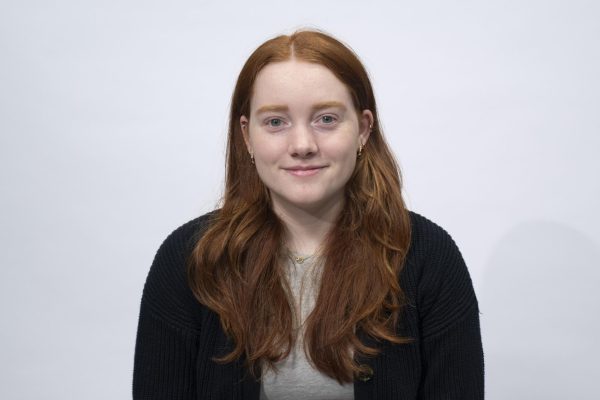Over 50,000 people gathered in Boston Common April 5 for a “Hands Off Massachusetts” rally and march protesting the policies of President Donald Trump, tech billionaire Elon Musk and their political allies, according to 50501 Press Representative Rebecca Winter.
The Boston demonstration was one of at least 1,300 “Hands Off” rallies across all 50 states, as well as some held outside of the United States in London, Berlin and Paris. One hundred and eighteen organizations co-sponsored the event, including Massachusetts 50501 as one of the lead organizers following their series of anti-Trump protests since Feb. 5.
“I cannot believe the amount of growth. The first 50501 protest I went to only had about 300 people,” Winter said. “People are passionate about the destruction that’s happening to our democracy right now.”
While all past 50501 protests opposed the Trump administration, the “Hands Off” rally focused on defending the rights of minorities and other communities in Boston targeted by Trump, including immigrants, LGBTQ+ individuals, universities and more.
“We want the administration to take their hands off of Boston, off of Massachusetts, off of America,” Winter said. “We want the power back to the people.”
Protesters met at Parkman Bandstand in Boston Common at 11 a.m. for speeches by the Rev. Mariama White-Hammond, who also served as the master of ceremonies for the event, Massachusetts American Federation of Labor and Congress of Industrial Organizations President Chrissy Lynch and Lt. Gov. Kim Driscoll. After her speech, Driscoll spoke with The Huntington News about the role of Massachusetts in sending a message to the rest of the country.
“Massachusetts is a leader,” Driscoll said in an interview with The News. “We stand up for values here that really matter and we know that we’re a beacon. What we do matters in other places. They’ll follow [us]. The founding of American democracy started here, so we’re going to keep doing what we do to be the backstop and the beacon and protect ourselves from what’s happening in Washington.”
Driscoll also spoke about the importance of university students participating in protests.
“Stand with us. The future that we’re trying to build is going to be yours to lead and we need you to be part of this effort right now more than ever,” Driscoll said.
At 11:20 a.m., protesters flooded Tremont Street and marched to City Hall Plaza, where organizers had set up a stage for more speeches and musical performances. Notable speakers included Boston Mayor Michelle Wu, Massachusetts Sen. Edward Markey and Rep. Ayanna Pressley, among others.
“Trump’s Congress wanted to make an example of Boston. It might have been my voice that was in the microphone that day, but it was all of Boston that gave Congress their answer,” Wu said in her speech. “Hands off Boston.”

The protest also featured musical performances by Dropkick Murphys and the Boston Voices of Community and Labor choir. The members of Dropkick Murphys, who have a history of opposing Trump and his policies, debuted their new song “Who’ll Stand With Us” to start their brief acoustic set. Ken Casey, lead vocalist of Dropkick Murphys, spoke to The News about the importance of taking a political stand.
“[Trump] is trying to stifle any dissent and he’s trying to consolidate power, so we can’t give in, we can’t let him accomplish that goal,” Casey said.
Casey went on to say that while protests like the one in Boston are important, action by legislators is necessary to make substantial change
“The people that are in Congress and the Senate should be chaining themselves to the doors and getting hauled off in cuffs if they have to, because that’s the level of protest we need right now,” Casey said.
Many attendees of the event showed off their creativity; protesters played instruments, wore imaginative costumes and carried homemade signs and props. The countless signs were decorated with slogans ranging from witty to profound, such as “only the people can save the people,” “American democracy can’t be bought” and “I’ve seen better cabinets at IKEA.”
A history of resistance art, music and culture was palpable among the crowd. Hundreds of protesters wore the feminist pussyhats. Social movements often inspire culture in the form of music, fashion, photography and more. Mass protests of the past depended on art to captivate and empower the nation; April 5 was no different.
“I think [music and art] bring people together. It gives people the opportunity to converse, it gives people the opportunity to support one another and it gives a feeling of joy that is really necessary,” said Laura Gomez Ickes, an art teacher from Belmont, Massachusetts, who attended the rally. “If you’re suppressing art, you’re suppressing human function and human expression.”

The Trump administration has taken recent actions against artistic liberation, such as signing an executive order targeting the Smithsonian and reallocating funds for the National Endowment for the Humanities, one of the United States’ primary conduits for federal arts and humanities funding. For Gomez Ickes and others at the rally, making and displaying art was an act of resistance in itself.
“I’m an art educator and an artist, and I’m a supporter of the arts, and I know that once the arts go down, that leads to suppression of other rights and other ways of dissenting, and all you need to do is look into the Nazi past and see how the arts were suppressed,” Gomez Ickes said.
Similar rallies are planned for the coming months, though specific dates and details are yet to be confirmed, according to organizers. Winter said she expects even larger turnouts at future events.
“We’re going to see these demonstrations getting bigger. We’re going to see different types of demonstrations. They’ll still be peaceful and lawful,” Winter said. “People everywhere are standing up.”
















